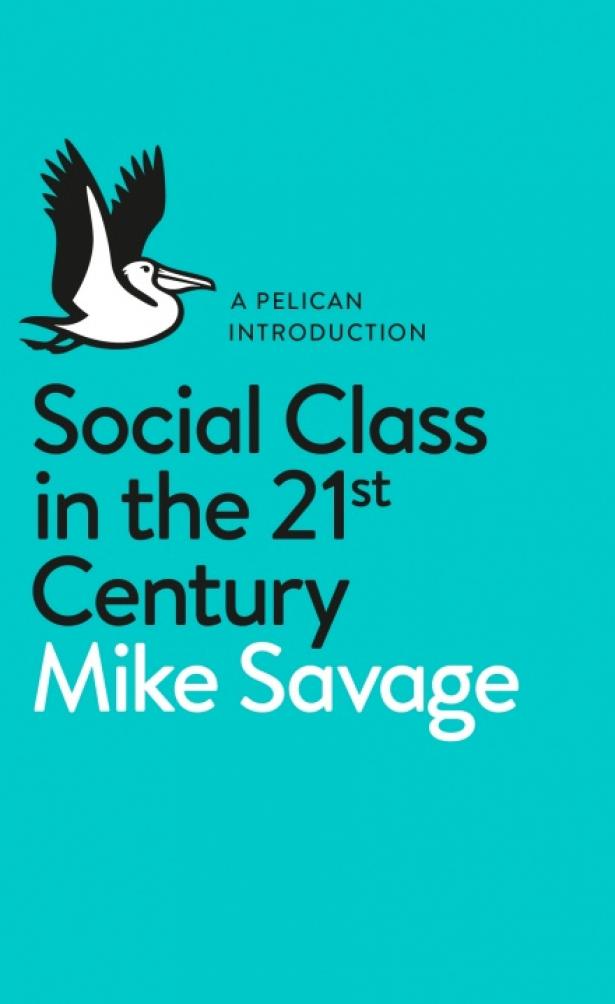Social Class in the 21st Century
Mike Savage
Pelican Books
ISBN: 9780241004227
If there’s a single fact that illustrates the way social class works in Britain today, it’s in the opening pages of this startling book. Of the 161,000 people who initially filled in the Great British Class Survey, which ran on the BBC website in 2011, 4.1% listed their occupation as chief executive, which is 20 times their representation in the labour force. By contrast, precisely no one stated they were a cleaner. While it’s pleasant to have your status at the top of the social pile affirmed, it’s rather less so to be reminded you’re at the bottom.
The coffin of class, to paraphrase Richard Hoggart, remains stubbornly empty. Savage and his colleagues in the London School of Economics’ sociology department have used the results of the class survey to create a seven-class schema, which reveals the vast and growing disparity in wealth and power between the “elite” and the “precariat”. The old distinctions between upper, middle and working class no longer hold true, necessitating a range of new intermediate groups that reflect the reality of social mobility for an enlarged lower-to-upper-middle class. Savage estimates that a super-wealthy class now represents about 6% of the population, with an average household income of £89,000 – boosted, he notes, by attendance at Oxford and one or two other super-elite universities.
The new elite is followed by the “established middle class” – well-off, socially gregarious and keen on the arts (London theatre ticket sales went up by 191% in the week the results of the class survey were released: a case of the established middle-class remembering they need to go to the theatre more in order to retain their status?).
Members of the “technical middle class” have as much money as the established middle class but don’t know as many people or possess as much cultural capital. The “new affluent worker” is working class, but relatively well off and keen to live the good life, as are the group of “emergent service workers” below them.
But it’s the last two groups – “traditional working class” and “precariat” – that have suffered most both in relative and absolute terms. The “precariat” are those whose lives are characterised by unstable, low-earning jobs, who cannot afford to make long-term plans, and whose social connection to those at the very top has grown weaker as the elite class ceases to use public services.
Long-range social mobility, from bottom to top, is a feat summed up by the title of one chapter: “Climbing Mountains”. More common, argues Savage, is the short-range movement within the middle classes, enabled by the social and cultural capital accumulated through going to university.
However, you don’t get to be a member of the new elite by going to any old former poly, or even a Russell Group university. If you want to make lots of money – lots more than almost everyone else in the country – you have to go to Oxford, King’s College London or Imperial College, then get a job in London.
The authors are indebted to the French sociologist Pierre Bourdieu and his detailed work on the psychological landscape of class – the “symbolic violence” visited on those at the bottom of the class pile through snobbery, exclusion and the consistent refusal by those better off to shoulder their share of what Bourdieu calls “the weight of the world”. Savage’s commitment to bringing out the nuances of class relationships, and the experiences of individuals in the class structure, makes this book invaluable.
When class is debated in the public sphere it is too often a crude matter of who has money and who hasn’t, or who is and isn’t a member of “the establishment”, a term that Savage regards as “unfortunate”, not least because the London-based economic elite he identifies are almost as likely to have attended comprehensive as private schools.
A new level of snobbery has developed as inequality has increased. Class judgments are ever more personally derogatory, as if they were prophylactics against being thought of as “common”. This is expressed most clearly towards the end of the book by Lorraine, a forklift truck driver who refrains from identifying herself as working class because “I don’t think I would want to be in the same class as somebody who takes what they can and has the attitude of ‘Well, I’m better off not working’, do you see what I mean?”
Lorraine goes on to say that such people are “quite often fat, aren’t they? And then they wonder why.” The rough/respectable divide retains a powerful hold on working-class relationships and self-awareness, and is exploited by politicians in election after election, while the new elite gets on with consolidating its hoard of economic, cultural and social capital.


Spread the word